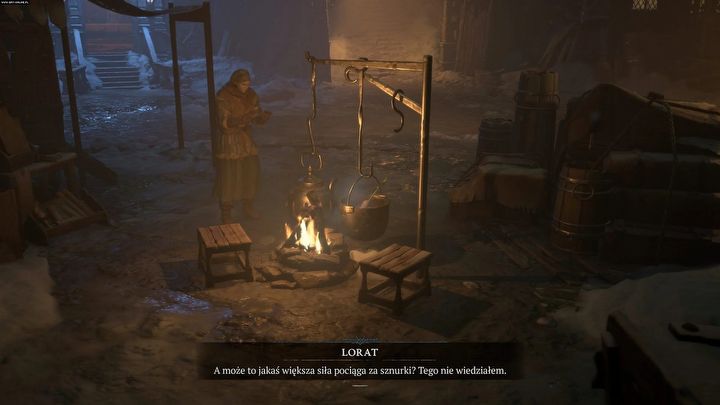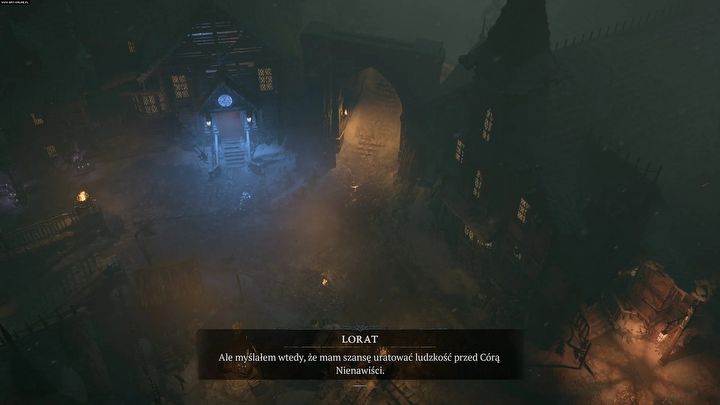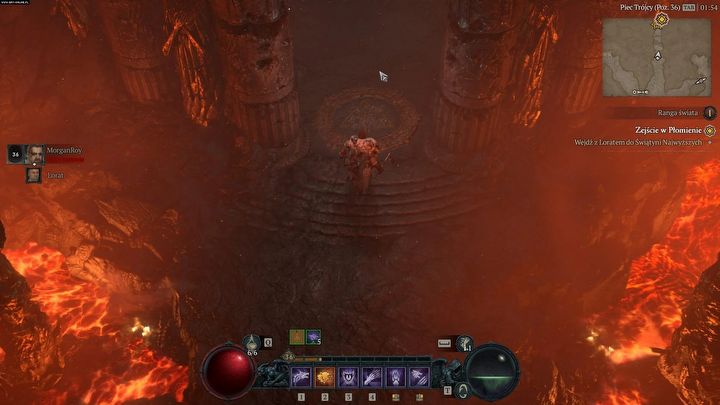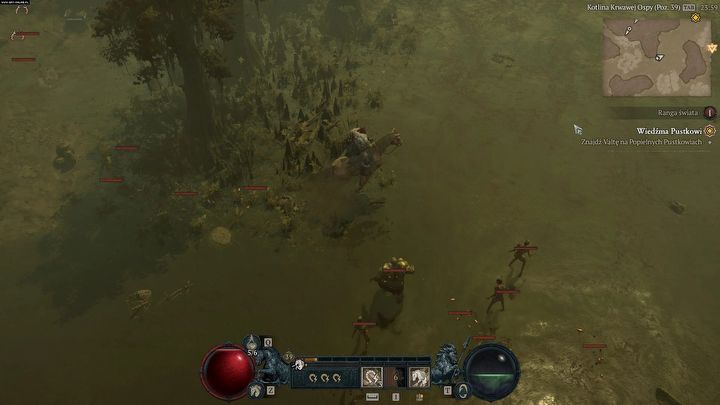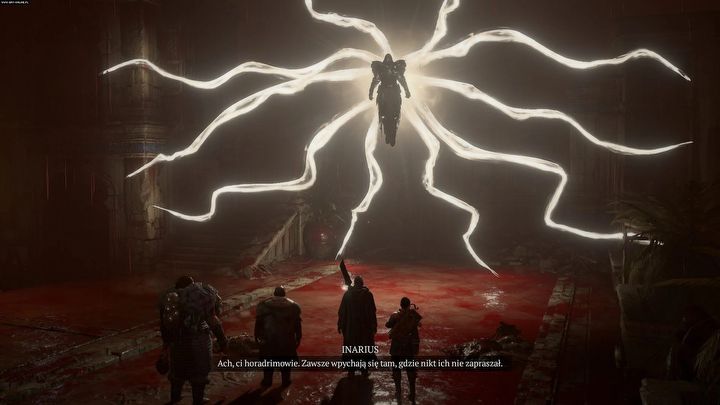Diablo 4 Offers Criticism of Fundamentalism That I Didn't See Coming
I anticipated a great story in Diablo 4, but didn't expect it rather than character development, to be the driving force for deep contemplation. It bravely explores sensitive themes like religion, leaving us with unanswered questions.
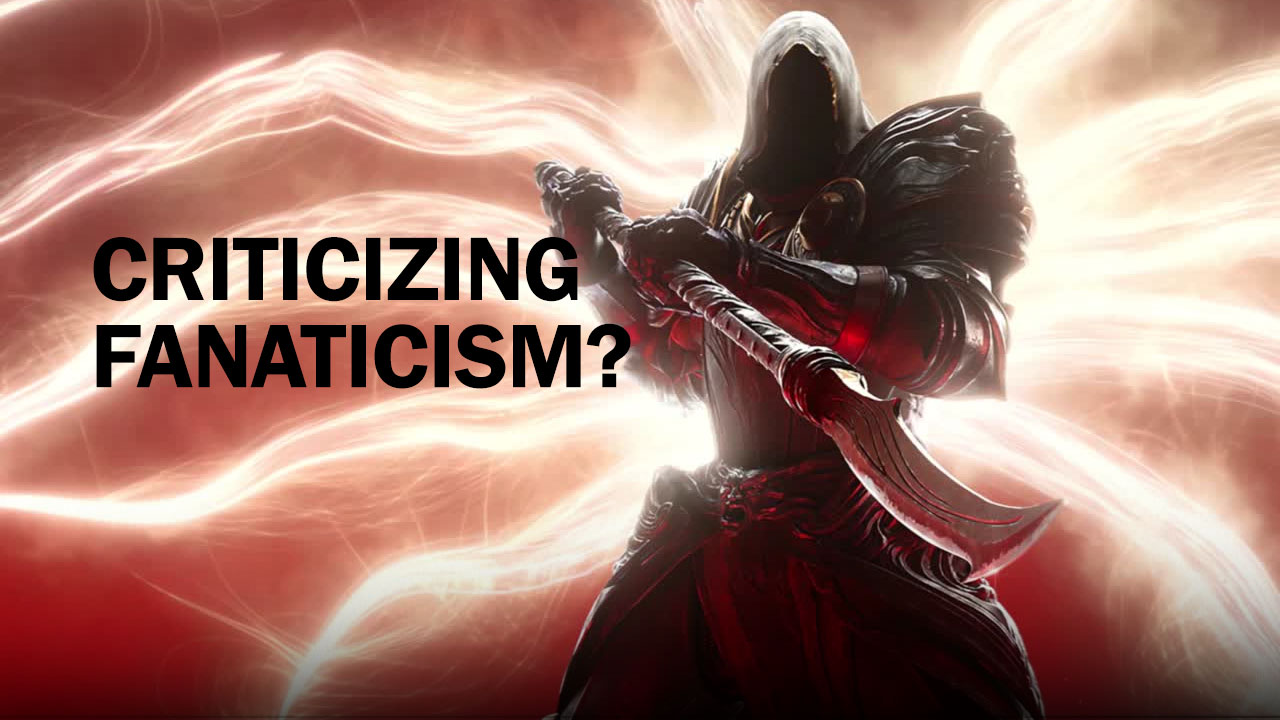
"Lol, Diablo and a plot, he, he." It's a reaction I've often encountered when I tried to convince someone that the lore and plot background have enormous potential in this series. I do understand, however, such a response to my argument. Casual gamers are reaching for Diablo due to its atmosphere and "hack&slashing" of thousands of creatures. Because even though the potential for telling engaging stories was in the series from the very beginning, it was Diablo 4, that gave plot a proper scope. And even though we don't make any decisions of a moral nature in the game, the plot confronts us with such questions on a regular basis. And it doesn't give us clear answers. Religion, anarchy, and a few other currents of thought or philosophies take a hit. AND WARNING – THERE WILL BE SPOILERS.
Yes, the first and second Diablo were focused on building a background and seducing us with their dense atmosphere and loads of unknowns. Undoubtedly, these games have given us some interesting ideas. For example: true evil cannot be defeated, it will always return in one form or another, and man is doomed to wander between the cold, heavenly brightness, and hellish fury. Still, all this was more visible in the background of the game. Our heroes always arrived to clean up after someone else. Diablo 3 changed the presentation of events and threw us, along with the most important NPCs, into the center of the infernal affairs. Actually, everything that was terrible – happened because of our companions.
And it was a step in the right direction. Just a very lame one at that. I have criticized the plot many times before. First of all, the plot was butchered alive with dialogue written on a knee, as cheap as a 20-year-old Fiesta. Besides, the whole concept of presenting "Nephalem players" may have balanced the dissonance between being mortal and slaughtering thousands of enemies, but unfortunately – it ruined everything else, mainly the atmosphere and integrity of the world. Because who do we actually have to be afraid of, if the overlords of hell are tucking tails before our barbarian or demon hunter? Tyrael could simply dispatch an anti-demonic spec-ops commando for emergency tasks whenever demonic hooves tread his sacred realm – and that would be it. Although the ending of Reaper of Souls suggested that the Nephalem could eventually become corrupted, it was never really confirmed.
Either way, the gameplay foundations with a stronger focus on story-driven background have been established. And if someone had enough, an adventure mode was always an option. Still, Diablo 3 showed that it was possible. Even more importantly, it brought along some decent ideas that only needed a little development. In Diablo 3, demons have been given a slightly more human, albeit somewhat shallow, face. Angels, meanwhile, turned into cold-blooded fascists who scorned humanity. And so the image of the good-natured and self-sacrificing Tyrael was all gone.
When the permanently dissatisfied, humanity-hating Imperius, or the murderous Maltael appeared next to us, we wondered if an alliance with them was a good idea. In fact, the game, as well as the promo materials, showed that both angels and demons – simply enjoyed it. They are simply waiting to start plotting, rush into the battle, and wash themselves in the blood of their enemies. For them, it’s a freaking national sport. Just like StarCraft in Korea. And the human race? It's just a side-product of a temporary armistice and misalignment between the two sides.
Quite an interesting setting to tell a fascinating story. It told a little too much in terms of founding myths, but Diablo 4, through the right narrative tools, got away from the uncomfortable mistakes of its predecessor. It covered everything with darkness, learned the lesson, and decided to tell its own story. A very neat and touching one. Featuring characters with well-written narrative arcs (the path of psychological change) to pursue. With reasonable dilemmas and ambiguous sides of the conflict. You see, Diablo 4 is playing with us by asking a basic question: who’s right? The most terrible answer could be: nobody is.
The toxic parents of humanity – the archangel Inarius and the demoness Lilith – have returned from exile. And both have their hidden motives and plans for us. Completely doomed by his own sins and decisions, but still convinced of his righteousness Inarius and disturbingly empathetic Lilith are doing the same thing – using people to achieve their agendas. They represent two, radically different ideas. And they clash like a crazy "angelo-demonic" family from a trailer park.
When reason sleeps...
Inarius’ cult is practically monotheistic. It places the archangel at the center and proclaims him the savior to mankind. Considering that the whole heavens decided they'd had enough and sealed their gates (well, the recent mess at the angelic place is a bit our fault...), we were left alone in the war against the demons. So Inarius, even with his frigidity, seems a better option. Because he's simply there. He gives us a goal. Well, sometimes he even helps with some kind of a miracle, treatment, or a blessing. At least as long as he needs followers. He plays a godly game of chess, and uses us like pawns. We may wonder – was he always like this, or did the centuries spent in hell under the sensitive care of Mephisto change him so much? Blizzard's game doesn't provide an answer. At least not an exact one.
What it does with perfect clarity, however, is revealing the mechanisms underlying the origins of fanatical religious cults. These kinds of religions are emerging out of desperation and need. Out of hunger, a purposelessness, out of emptiness after a massive loss. Out of exhaustion of the current situation. People in the Sanctuary are probably past all stages of grief. That’s why many welcomed the Cathedral of Light as pure salvation. And it doesn't matter that Inarius's henchmen impose ridiculous, strict, and usually cruel rules upon the herd. Just look at one of the first videos in the game or the fate of one of our earliest friends in Diablo 4. So what that they force you to make sacrifices, to endure extreme pain, and to devote your entire life to them?
What matters is that we achieve the goal. That we have a purpose. That somewhere out there, redemption, salvation, and a better fate await us. Somewhere, sometime, somehow. But not yet. Now, we shall suffer for a just cause. Allow yourself to be maimed and killed in the name of your winged savior achieving what he has in mind. Sounds familiar? Well, of course it does.
Blizzard succeeded in the art of infusing an ample vivisection of the mechanisms underlying the birth of fanaticism and religious extremism – especially of monotheistic factions – into a game about slaughtering demons. Most of our cultures are monotheistic. So, we’re familiar with the balancing act between temperate religious beliefs and the outcry of fanatics who are just waiting to impose their visions on the entire world. Visions, it must be noted, that are born out of some crooked sense of guilt that they want to project onto others.
Diablo 4 manages to capture several different stages of decaying sanity. We see terrified provincial peasants absorbing every word of the viceroys of viceroys of Inarius’ viceroys. We also witness the actions of very elite of this movement, such as the highest priests. They give special meaning to every word, every sneer, and every contemptuous glance of Inarius. Every gesture is turned into holiness, religion, and twisted rituals. If Inarius treated my druid like a piece of junk (for whatever reason), in the eyes of the priestess, it means a blessing and a trial. You know, in this way, absolutely every action can be explained, because after all, the cross we bear for the sake of the higher good leads us to absolution. And sure, it’s just as difficult as burdening one of the world’s richest pastors with an extra million bucks on his account. Such a cross is certainly not light to bear (everyone’s got bills to pay).
At some point, every action can be fitted into the mythology and legacy of a particular religion. Because of this, the privileged ones will live like kings, and the average follower will not dare to disagree. The leader of the Cathedral in Diablo 4 definitely behaves like that. Maybe it's out of stupidity, or maybe it's out of cynicism. Or perhaps because of both.
But one thing about Inarius is obvious. He's a jerk. A cold-hearted fool who treats us like cannon fodder, a bargaining chip. It fits very perfectly into the archetype of fanatical sect leaders. They always promise a lot. They tell you that you are not alone. They give you a sense of purpose and care. A feeling of being a part of an enormous community. And maybe a little joy and fun at first. And then, once you become owned by religion, drugs, orgies, or other forms of reward, they make you their marionettes. While still seeking the greatest possible benefits for themselves. Often simple, primitive, and material, not having anything in common with the spiritual world. Sometimes, they even believe the bullshit they keep telling to others. Just as Inarius believed he was the prophecy's champion. Meanwhile, he is still focusing on his own benefits, of course.
It is worth noting at this point that Diablo 4 did not take the easy way out. It doesn't say that only Christianity is wrong and that atheism, paganism, or satanism are right. Not really. It simply warns against extremism, against mindless submission to spiritual or religious leaders in times of desperation. This seems alarmingly relevant, but presented in a fairly balanced way. Especially since it shows or suggests that these religions have various versions, branches, and forms. Some are better, some even worse, but certainly not as brutal and victimizing as the Cathedral of Light.
In previous installments, we had the opportunity to play a crusader or a paladin. A spirited warrior of religion who honors values and stands up for the weak. I liked my crusader from Diablo 3 and I hope that we will also get this type of protagonist in Diablo 4. A bit arrogant, but a thoughtful, good-natured warrior.
So it's hard to define Diablo 4 as just an unceremonious criticism of religion, because the game effectively escapes this framework. It does dedicate a lot of space, words, and strong images to extremism, though.
To make it more fun – the plot forces us to ally with our beloved Inarius. Because the alternative, no matter how sweet it may seem – perhaps due to Lilith's voice – brings even greater chaos and destruction.
...monsters awake
The best kind of villains are those, who bring our moral dilemmas to the surface. Those that question what we believe in. Or at least question the beliefs of the characters in a given story. And that's exactly how it is with Lilith. We don’t agree with her methods or her ultimate goal. We are uncertain about what she will do when she achieves success. But we just cannot deny that she's right about a few things. Such as the one that angels do not represent any unique and true protection. Or that the human race is alone in this conflict, because it can't count on the help of neither humans nor demons.
The Mother of Humanity, through her journey and exposing Inarius's weaknesses, seeds doubt inside the minds of characters and some players as well. Because even if we get something, as we do from Inarius, it most often involves taking a debt. Lilith knows about it. And she knows that people can only rely on themselves, that they must bring out their remaining strength and try to survive with their own devices. And this strength is unrelated to Inarius or anyone else. Especially since the current order has been rather weak with defending anyone, and succumbed to decay or corruption, ultimately leading to suffering.
And she does make a lot of valid points, doesn't she? But she herself is part of the problem. She was born into the existing system and replicates many of its mistakes – after all, she is the true-born daughter of Mephisto, the Lord of Hatred, driven by the same instincts as her father. Although sometimes she's able to show some empathy, maybe even a warped kind of maternal love.
Lilith says that everyone can do what they want, how they want, and with whom they want – at least until someone stronger comes along and eats the weaker ones. She truly believes this is a healthy approach to deal with issues. Because the world is about the survival of the fittest. But leaving aside the potential sad demise from the hand of man or demon – the world is your oyster. Mama's back at the Sanctuary – the party never ends. Let's not mind the consequences, let's not mind others, their feelings, or their needs, like the stupid drive to survive another day – let's just demonstrate our power. Let's taste true freedom. Let's even taste those fruits that, perhaps, were forbidden for a reason. For example, fruits resembling human kidneys. This is definitely a great way to become a superhuman and awaken your nephilim potential. So we are dealing with the opposite extreme. A total, demonic anarchy.
There is a subtle difference between what Lilith proposes and being an epicurean or even a hedonist. There is nothing wrong with fulfilling our desires – any, even perverse and unobvious ones – as long as we do not harm anyone. As long as we don't force anyone to do anything. So, this, as well as not giving a flop about someone's opinions – for example, for the opinion of the Cathedral followers – is the real freedom. Healthy, sometimes even developing our world perception.
Lilith's proposal – a brutal severance of any kind of order – leads to the reality known from Mad Max. And what we get here is Mad Max on crystal meth. Because freedom without any restrictions is the other extreme of the same axis, on which the followers of Inarius are found. An extremism that threatens to get out of hand quickly, create devastation, and swallow up everything. Followers of Lilith are also her pawns. Their values and the chaos they spread only help the Daughter of Hatred run her enormous gambit.
For Lilith, it’s simply a method to achieve her goal (we learn about it at the end of the story, but it seems quite easy to guess – nonetheless, see for yourself). It works a bit like the mechanism that drove mass revolutions, which began with solemn words but ended as giant massacres. Many of them had incisive concepts, but they also had some outside backer who wanted to get something out of the mayhem for themselves. Once upon a time, Lenin came to Tsarist Russia with wagons full of Western money, because the patrons of the revolution believed that this would unsettle their eastern rival. In fact, they didn't make much of a mistake. Putin also sponsored various right and left-wing movements to destabilize the social order and, as a result, made specific countries weaker.
Lilith's march through the Sanctuary and its consequences nicely reflect this and similar mechanisms, using this adventurous-gothic story about people, angels, and demons. It works, because Lilith herself is a charismatic, persuasive leader. Often being significantly more empathetic and human-focused than her ex-lover Inarius. However, you never know whether she cried for the man because she actually treated him as her own child – or rather as a necessary tool. It's a matter of forming your own opinion about it.
Anyway, we will come across a number of stories that provide uncomfortable questions and change our impressions of both sides of the conflict. And Blizzard performed this narrative technique masterfully. But in the story of Diablo 4, there are still a few details waiting to be discovered.
Casualties
Where wood is chopped, chips will fly. In great conflicts, it’s the bystanders who suffer the most, while the main sides of the conflict are having their jolly good time plotting and counting chickens before they’re hatched. In the case of the Sanctuary, the most common victims are people. But Blizzard's screenwriters didn't take the easy way out. Somewhere aside, they have decided to tell us a story about how certain religions and cultures change, become extinct, and battle each other over the course of history.
This can be seen as you go through the second act and travel through the western Sanctuary lands; when we slow down a bit in our crazy run after Lilith and look at the minor details of the main storyline and some secondary quests. These are focused on a region once patronized by druids, who are still trying to care for it, but are also challenged by monotheists. So, as you can assume, the pagan Celtic culture is gradually being displaced by the armored missionaries from the Cathedral of Light. Formally, they want to help, but extreme situations very often make them abandon their original values. You want to help, but all you do is exacerbate. Extremism, thus, breeds extremism.
In the same act, we learn that some druids and their proteges – desperate and tired more than encouraged by Inarius – turned to Lilith to defend what was important to them. To resist the armed, merciless fist of the "Lightness."
We are seeing similar situations in several other regions. The cure becomes so nasty and so devastating that yielding to Lilith's poison doesn't seem so terrible anymore. Not when the survival of a particular group's heritage is at stake. And after all, many real countries and cultures struggle with a similar dilemma – what to do to remain themselves in the era of expanding civilizations? Even if the game sometimes says something directly about it (which does not happen often) – we still don't like those answers. In any case, through numerous side stories, we can observe this disintegration from many different angles. Usually very human, grounded perspectives; these are often personal problems resulting from top-down initiatives.
It's a bitter and complicated world. A world on the verge of rebirth or collapse. I have a strange impression about Diablo 4. The same Diablo 4 which seems to many people as a rather conservative game, shows a great deal of courage in the narrative structure. Because from a simple story about the struggle between good and evil, it made an ambiguous, bitter, and multilayered tale. Because although it’s dark and gothic, the story allows us to look through a mirror. Just like the best fables. Which were often very cruel as well.
In each of the questions described, Diablo 4 doesn't give us a simple and clear answer. The questions are easy to catch because they come up frequently, especially in scenes when someone we just happened to like dies. But we must look for the remedy on our own. If it even exists. And we probably won't always be able to find it. Maybe in the expansions, though perhaps they will not go a long way to make it less ambivalent.
For me, this answer was the fullness of humanity, knowing what’s black and what’s white, sometimes wading in a sea of grayness. Being ready to use the power of darkness if necessary. The answer would be to stay an ordinary, but conscious person. Like the bitter, but ready for action, Lorat. Like other companions. Like our protagonist. Maybe it's not enough. But maybe it will be enough for those few people we save in the game. It's hard to say how much an individual's decency is worth in the face of larger-than-life threats.
Philosophical treatise? The next great RPG that comments the reality? Well, not really. This is all included in a game about smashing monsters in order to find a better item, signed with a prettier color than the previous one. These virtual little people can be quite amusing.

